Wednesday April 22 After breakfast this morning, we were transferred to Eros Airport in Windhoek where we met our pilot for the 2-hour flight to the Tsumkwe region, previously known as Bushmanland. We left in three planes, each carrying three guests and a pilot. Flying over rather barren, uninteresting terrain, with occasional bumps or drops, with another of our planes sometimes barely off of our tail, we landed at Nhoma’s airstrip, where we were met and transferred to the Nhoma Safari Camp.
Nhoma Safari Camp is a semi-luxury tented camp situated in the northeast of Namibia within the communal land of the Ju/’hoan Bushmen or San, 80 km northwest of Tsumkwe. The camp is spread over a vegetated dune with views over the Nhoma omuramba (fossil river bed) and is a short walk from the Ju/’hoan village by the name of //Nhoq’ma (no, this spelling does not contains typos). Guests are accommodated in spacious meru style walk-in tents with private verandahs. The safari tents, shaded by large Zambezi teak trees, provide the basic luxuries such as comfortable beds and en-suite bathroom with hot water. At the highest point of the dune is the thatched dining area where wholesome meals are served buffet style. The camp is owned and was built by Arno Oosthuisen (a convivial fellow who was one of the people who picked us up at the airstrip) with the help of the //Nhoq’ma community with whom he has had an exclusive working agreement since 1999. Tourism allows the community to earn cash in order to buy food and supplies not provided by the surrounding environment. Without tourism, the community may have left their ancestral land and moved to settled areas such as Tsumkwe.
After being taken to our comfortable camp and taking a very short breather, we went for a buffet lunch at the thatched dining area, and talked about what we would see when we walked over to the village that afternoon. Met back at the main tent at 3PM for the 5-minute walk down a sandy road to //Nhoq’ma. The village has about 100 people, including the children who are on school vacation from their school 30 kms away. Fabulous opportunity to see the people of the village, who were quite welcoming, but went on about living their lives. Nevada had brought hundreds of prints from photos she’d taken last year and people were thrilled to see them. This generous gesture I’m sure opened people up greatly to us, though I think they’d have been welcoming anyway.
Spent a wonderful couple hours wandering around, taking photos, watching them feed their children, make jewelry, create fire from rubbing sticks, children and adults playing games and doing dances, none of which was being done for our benefit. The area was large enough for all of us to walk around without getting in each other’s way while taking photos. We returned for an excellent dinner of kudu, very tender, then walked back to the village to watch and photograph people doing healing dances, again not being done for us, as they started well before we arrived and were not affected by our presence. I did not know what the hell,I was doing in photographing at night with a tripod, and my photos confirm that. Below is an assortment of photos from a great day.
(NOTE: HAVING PROBLEM LOADING PHOTOS, WILL TRY TO FIX)
Tuesday, April 21. We had drinks and something to eat at the modern and comfortable Intercontinental Hotel, a quick walk from the airport, with Nevada, Kathy and Erika last evening. Went up to bed early, but neitherCarol nor I slept very well, but at least had a long rest.
After breakfast at the hotel, our Santa Fe (Nevada is based in Santa Fe) travel agent, Jean Zunkel, arranged for us to be met by a fellow named Freedom, who showed us from our hotel across to the airport and got us checked in. Actually, Freedom was to have met us at the Joburg airport yesterday, but did not, demonstrating to us, metaphorically, the long and arduous path to finding freedom.
Carol and I have become great buddies with Jean, who is helping us on three other future trips. So, if you’re looking for a super-responsive and experienced travel agent with a sense of humor, consider this a shout out to Jean (jean.zunkel@bjadventures.com). Jean is also responsible for the excellent itinerary descriptions that I’m going to steal liberally from in this blog.
Our 9:30 flight for Windhoek’s International Hosea Kutako Airport, 40 km outside of Windhoek was a short (especially after yesterday’s travel) two hours. On arrival, we are picked up by one of our guides, Stuart, and transferred to the lovely Galton House Guesthouse, with a short city tour of Windhoek en route. Those of us in the group occupy the entire guest house. For lunch, they make the six of us who are there a very nice chicken salad. In addition to Erika and Kathy, there’s Jeff a retired doctor, originally from South Africa, but now living in Santa Barbara, California, and Bob, a urologist who lives in Gainesville, Florida.
Windhoek, Namibia’s capital and largest city (300,000) nestles among rolling hills, bounded by the Eros Mountains to the east, the Auas Mountains to the south and the Khomas Hochland in the west. It is a meeting place between Africa and Europe, the modern and the old. In the capital’s main streets, well-preserved German colonial buildings are in sharp contrast with modern architectural styles, while Herero women in their traditional Victorian dresses mingle with executives dressed in the latest fashions.
We have a very relaxed day at the gust house, since there does not appear to be much to see in Windhoek. We try to get back on schedule by napping a bit.
We meet for a debriefing by Terry, our main guide, who spreads a map of Namibia on a table and traces our trip for us, telling us briefly about each spot we’ll visit. By a happy coincidence, Terry is an avid birder and bird photographer. The trip all sounds incredible, and makes us even more excited about what we’re about to experience. Namibia is twice the size of California, but has a population of only two million people. Terry tells us that the risks of malaria are extremely small, so Erika and I both jump on the chance to stop taking it, since it upsets our stomachs. Carol has not yet decided what she’ll do.
After the debriefing we move to dinner, now joined by Nevada and our other two travel companions, Melissa, from San Francisco, and Dayton, a doctor, also from the San Francisco area, with whom I travelled to Guizhou a few years ago with Nevada. It seems a most genial group, and dinner is a lot of fun. We drink the two bottles of wine that Freedom gave us to apologize for not being at the Joburg airport to greet us, which we dub “Freedom Wine”.
On the interior flights in Namibia, we are strictly limited on type (no hard luggage or wheels) and weight, about 44 pounds. So, after dinner, I repack, so as to take only enough for the next couple days, leaving my heavy Nikon in a small case with wheels and most of my other things in a large duffle, which will be brought up to us by truck in a couple days.
We retire early, excited about the real beginning of our trip tomorrow. Expect photographs.
Sunday/Monday, April 19-20, 2015. The trip over to Africa is never easy, but Carol and I have made it so many times (this is our tenth) that we know full well what we’re in for. We set out from Chicago at about 11AM on April 19 to Washington Dulles and, after a 4-hour stint in the United Club, continue on from there to Johannesburg, South Africa, stopping for an hour in Dakar, Senegal. Altogether, the trip is 23 hours, from takeoff in Chicago to landing in South Africa.
On the plane, I read about half of a really good novel called The History of Love by Nicole Krauss, but spend a good part of the time preparing for what’s becoming a new obsession for me, bird photography. Carol and I really enjoyed the time we spent birding in The Pantanal in Brazil last April. If it turns out that birding is something we really enjoy doing together, then photography would definitely add to my enjoyment of it.
There will be some birds on this trip, but my real focus is on a birding trip we’ll be taking to Ecuador in June. The camera I’ve been using, the Sony NEX7, does not really have a long enough lens for bird photography, so I’m trying to decide how interested I am in that and how much time, effort and money I want to expend on finding out. I think that doing some bird photography would probably be quite fun, but the fact is that what I really like to photograph most is people. For me, a big issue is lugging around the heavy equipment necessary to really do it right. And, thus far, anyway, Carol has seemed unwilling to Sherpa for me.
So, while I was down in Sarasota this winter I talked to many different people to get their recommendations on equipment and bird photography. I also took a 4-hour lesson with a bird photographer down there. I know this is cheating, but here are a few of the photos I took down in Sarasota with a 200mm lens. They’re not nearly as good as they might be, with the proper equipment.
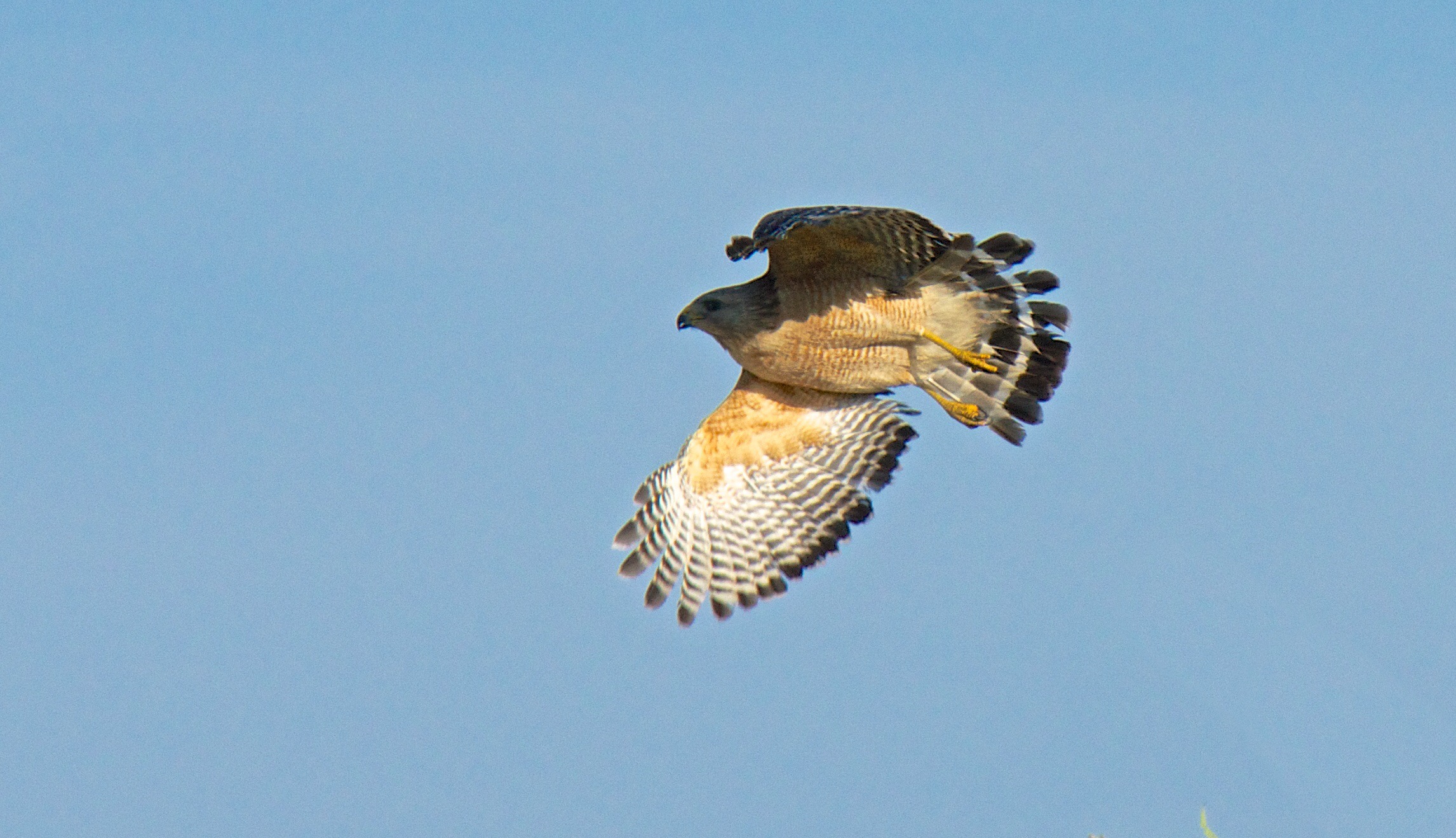
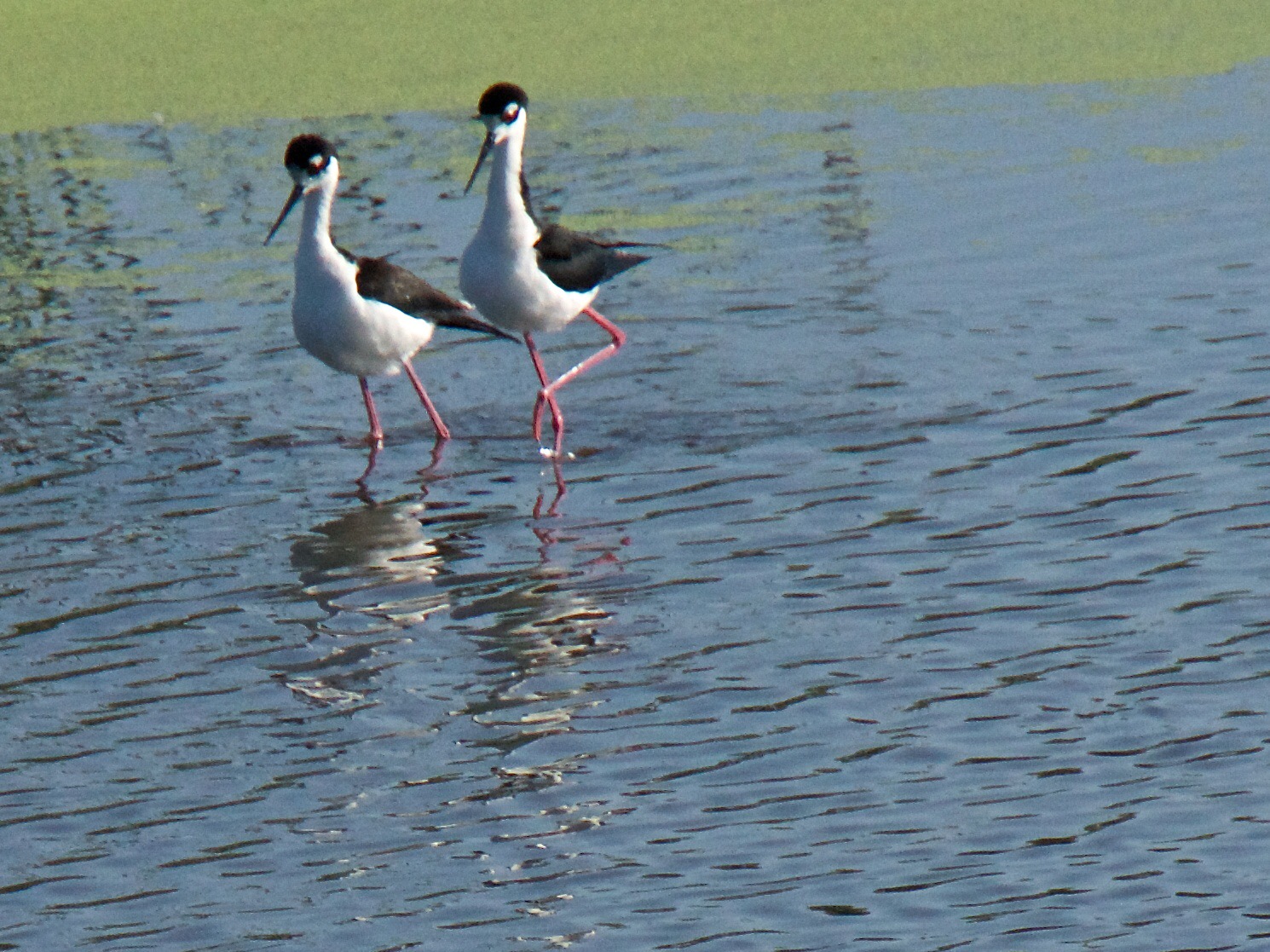
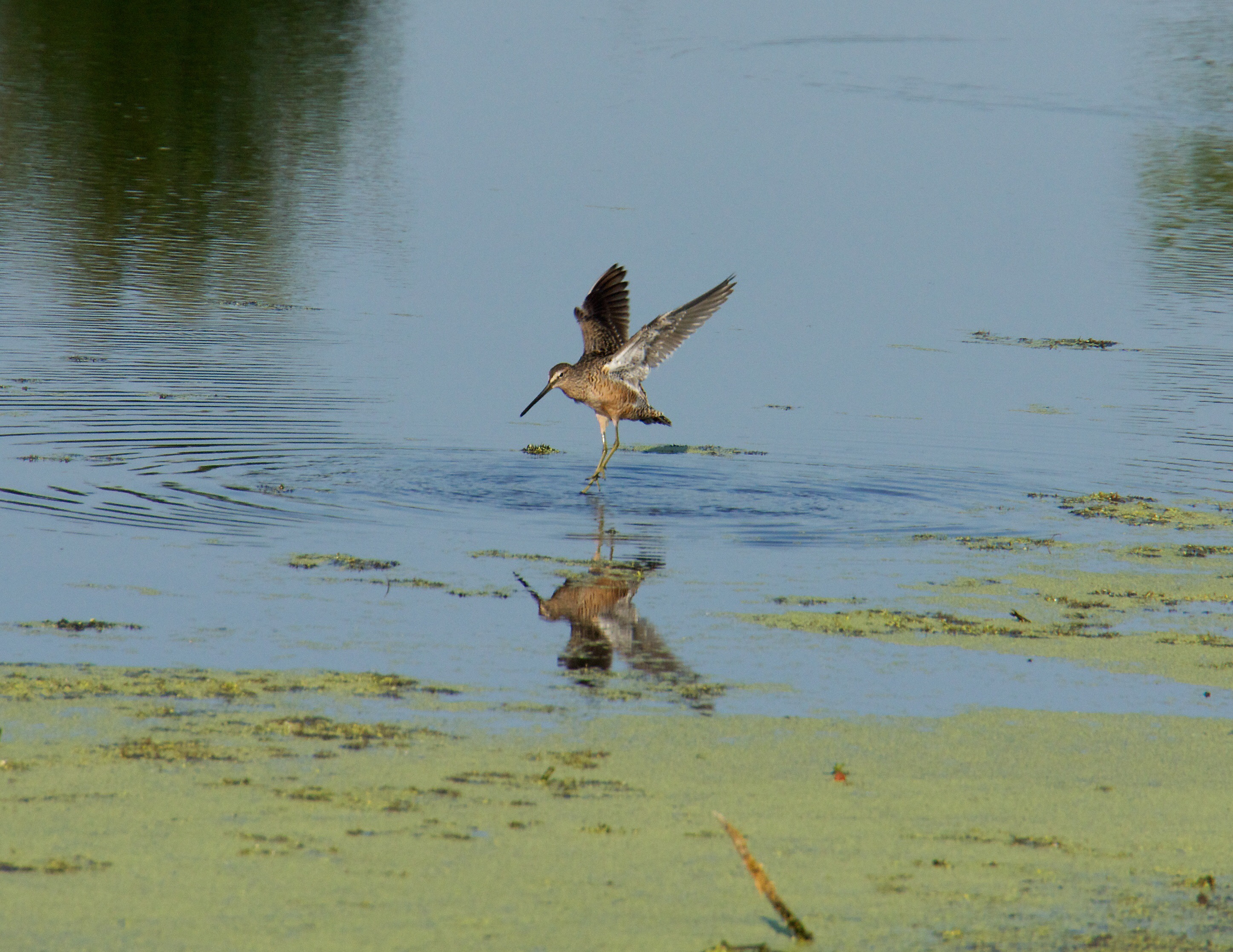
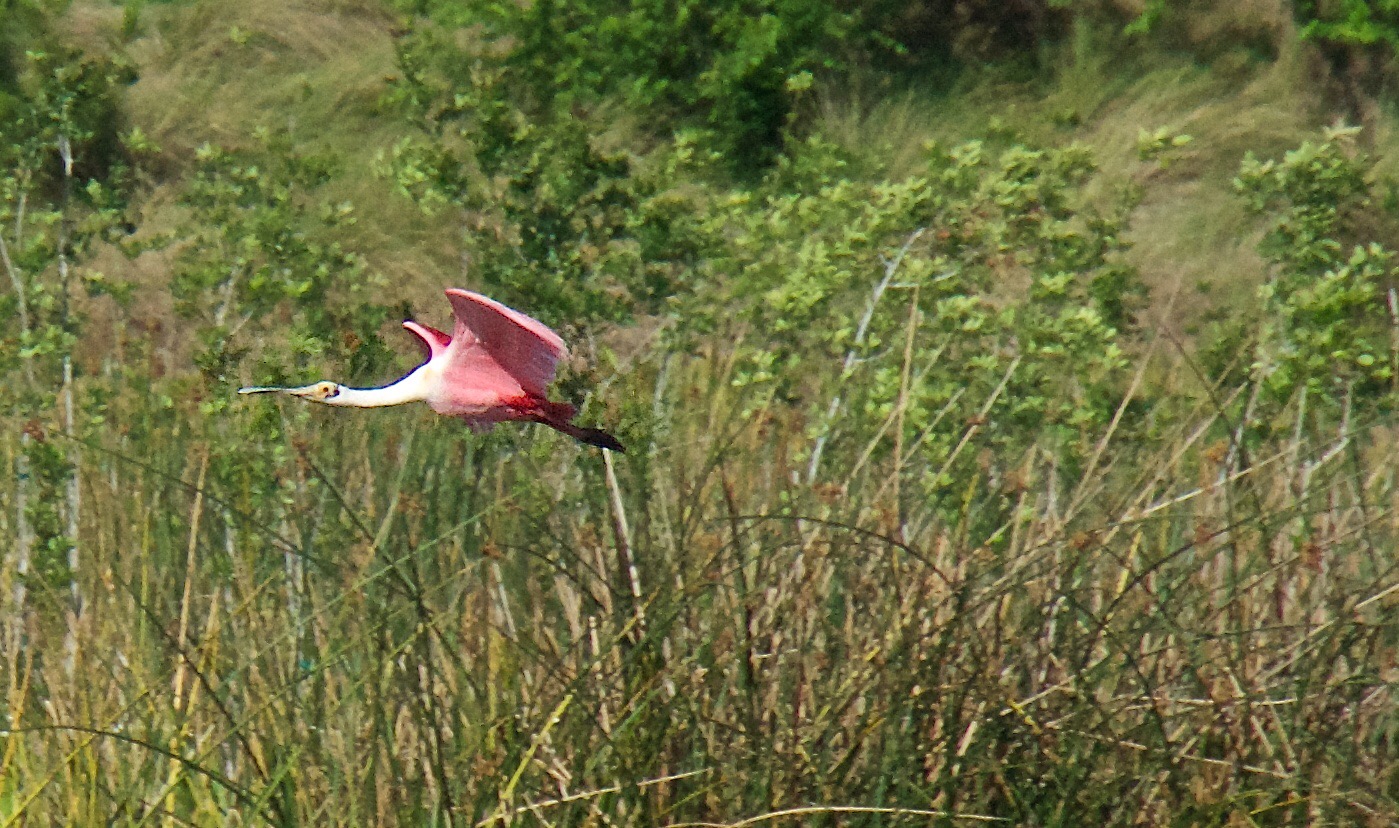
So, the plan I’ve come up with is to take my older, much heavier Nikon for which I have a 300mm lens (real bird photographers say that 400mm is the minimum) on this trip, use it along with my Sony, and see what happens. Spent time on the plane familiarizing myself again with the features and operation of my Nikon D90. All of these cameras have many more features than I ever use. The trick, really, is to figure out the ones to concentrate on. Anyway, things like this keep me off the streets.
Now that you’ve heard much more about photography than you probably care to, I’ll give you an overview of what we (and you) can expect on our trip, here’s a paragraph from the materials Nevada sent out announcing the trip.
The itinerary has been specially designed for photographers, focusing on the unique cultures in northern Namibia as well as unique and dramatic southwestern desert environments in the Namib. We will have the special opportunity to spend time with the San people at !Nhoma in Bushmanland, and the Himba people at Puros in Kaokoland. In Kaokoland we have the added benefit of access to the unique wildlife in the Hoarusib River that ‘runs’ through Puros – especially the desert elephant and other specialist adapted species. We will also visit the quaint old colonial seaside resort of Swakopmund with its unusual historic architecture, followed by the huge and free standing ‘apricot coloured’ dunes around the Sossusvlei Pan in the Namib, as well as the stunning Deadvlei which is also situated close to the Tsauchab river valley running west from Sesriem, and Sesriem Canyon. This is a full-bodied blend of Namibia best of culture, wildlife, and landscape.
Not hard to see why these trips sell out in a day, eh? Now let’s see what we actually get.
Two of the folks who will be in our group, Erika and Kathy, are on this flight, so we have a chance to at least meet them briefly. Turns out that Nevada is on the flight, too, so she came back (yup, we’re in steerage) to chat a bit and to get a chance to meet Carol. Though I’ve traveled with Nevada to Southwestern China and to Cuba, Carol was not on either of those photography trips so, though they’ve heard a lot about one another, they’d never met.
This just in: we landed in Dakar, Senegal and have an hour layover before going on to Joburg. As we were not allowed to get off the plane, Carol and I played a friendly game of gin rummy. Let’s just say that it did not go well for the little lady. In fact, she didn’t get a point in our game to 100. She wanted to play two out of three, but, of course, I told her that they didn’t do that in Senegal, which is well known as a “one and done” gin rummy country. This trip is really starting to gel. And, remember, this is just the first day!
So, I think I’ll end this here in the hopes of finding wifi at our hotel and being able to post it on arrival. Some sleep would be nice. Tomorrow, it’s on to Namibia.
Well, we’re headed to Namibia. Where the hell is that, you ask? Well, here’s a map, which, as you can see, places it above South Africa and west of Botswana.
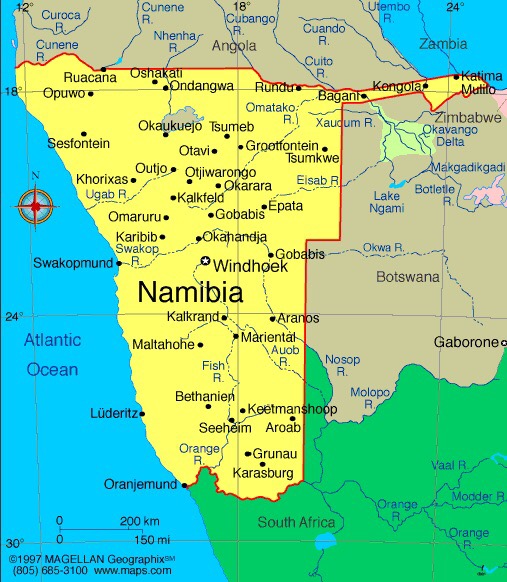
Why Namibia? Well, why not? We haven’t been there, and we’ve heard from multiple sources that it’s terrific, so it’s been high on our list for some time. Then, Nevada Weir, the fabulous photographer I’ve traveled to China and Cuba with announced a trip, and we pounced on it. When Nevada announces a trip, you either pounce on it, or you don’t go, because she has a following that generally snarfs up all the spots within a day. If you’re curious as to why I describe her as a fabulous photographer, check out her website, www.nevadaweir.com. But it wouldn’t matter that she was a fabulous photographer if she didn’t run terrific trips. She does. They’re interesting, adventuresome and fun. Though Nevada’s trips are photography trips, some are hard core photography trips that wouldn’t be good for a non-photographer like Carol, and some are much softer core, like this one.
Here’s a bit about Namibia, stolen (as usual) from several websites. Among the best of these is the Namibian government website. I’ve eliminated most of what seemed hyperbolic to me, but inevitably, a (perhaps overly) rosy picture emerges. Well, you wouldn’t expect a government website to highlight problems or understate the glories of the country, would you?
Namibia is a vast country, even by African standards, covering an area approximately four times the size of the United Kingdom but with a population of a mere two million – one of the lowest densities in the world. It is also an ageless land; visible through its heritage of rock art created by stone-age artists and geological attractions such as the magnificent sand dunes of the Namib Desert. Added to the space and silence, these all contribute to a feeling of antiquity, solitude and wilderness.
The climate is typical of a semi-desert country. Days are warm to hot and nights are generally cool. Temperatures are modified by the high plateau in the interior and by the cold Benguela Current that runs along the Atlantic coastline. Except for the first few months of the year, the country is generally dry with very little rain.
The history of Namibia can be found carved into rock paintings found to the south and in Twyfelfontein, some dating back to 26,000 B.C. A long lineage of various groups including San Bushmen, Bantu herdsmen and finally the Himba, Herero and Nama tribes among others have been making this rugged land home for thousands of years.
But, as Namibia has one of the world’s most barren and inhospitable coastlines, it wasn’t until the middle of the nineteenth century that explorers, ivory hunters, prospectors and missionaries began to journey into its interior. Beyond these visitors, Namibia was largely spared the attentions of European powers until the end of the 19th century when it was colonized by Germany and called South West Africa. The discovery of diamonds in 1908 prompted an influx of Europeans.
The colonization period was marred by many conflicts and rebellions by the pre-colonial Namibia population until WWI when it abruptly ended upon Germany’s surrender to the South African expeditionary army, who administered it under a League of Nations mandate. In effect, this transition only traded one colonial experience for another. Germany has apologized to Namibia for the colonial-era killings of thousands of members of the Herero ethnic group; their descendants have asked Berlin for financial compensation.
In 1966 the South West Africa People’s Organisation (SWAPO) launched the war for liberation for the area soon-named Namibia. The struggle for independence intensified and continued for more than twenty years, until South Africa agreed in 1988 to end its Apartheid administration. After democratic elections were held in 1989, Namibia became an independent state on March 21, 1990. To date, Namibia boasts a proud record of uninterrupted peace and stability.
Inter-racial reconciliation encouraged the country’s white people to remain and they still play a major role in farming and other economic sectors. In recent years supporters of land reform have become more vocal. The expropriation of white-owned farms began in 2005 and the government says it aims to resettle many thousands of landless citizens.
Our basic trip is about two weeks, but I will be doing an extension of about five days to have more contact with some of the indigenous cultures. Carol is flying back after the basic trip.
So, that’s probably enough to digest, pre-trip. We take off Sunday, and I’ll give you some more background then.
January 9-10
Pack and early breakfast at the Inn. Joe and Daniel Kwarteng come to say goodbye.
Drive with Kipharts and Olopades to the Kumasi Clinic, a maternal health care clinic that the Kipharts and, through their efforts, a foundation in Spain have supported, including construction of a new building an a modern lab. Here’s our favorite driver, Sammy.
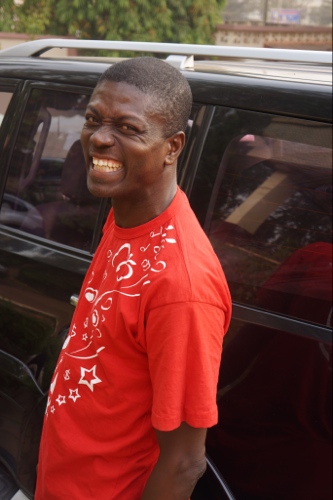
The Kioharts contact at the Clinic was Dr. Annie Opuku, a Madagascar-born, Russian-trained doctor, with a wonderful and caring heart. They had supported Dr. Annie on an ad hoc basis, responding to her requests from time to time over many years. With the Kipharts having changed their efforts to go through the Olopades, far more rigor and accounting was required, and Dr. Annie was not able to do this. Recently, Dr. Annie has left the clinic and is working elsewhere. The whole thing is complicated by the close personal relationship between Dr. Annie and the rest of us. She attended both dinners in Kumasi, the second with her son.
Dr. Ansong, a Ghanaian doctor who is working with the Olopades on projects in Ghana set up a meeting for us with the new acting director of the Clinic. Dr. Annie inserted herself into this meeting, which made for real awkwardness. We discussed current work in the Clinic. The Olopades feel strongly that the Clinic is missing out on a great source of revenue, by failing to market it’s excellent and very price-effective lab services to the outside. We also discussed possibilities of partnering with the Clinic, through Dr. Ansong, to provide health services in some of the villages that the Kipharts are supporting. Exactly what form that partnership might take needs to be explored.
We toured around the maternity clinic, early child care area and the lab, as reflected in some of the photos below.
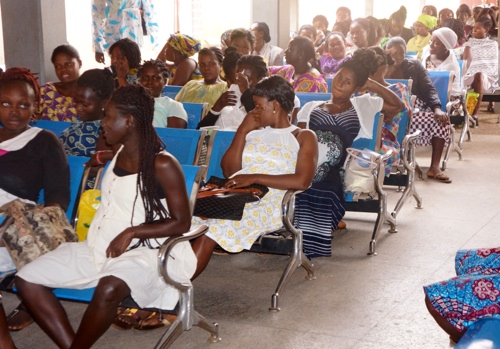
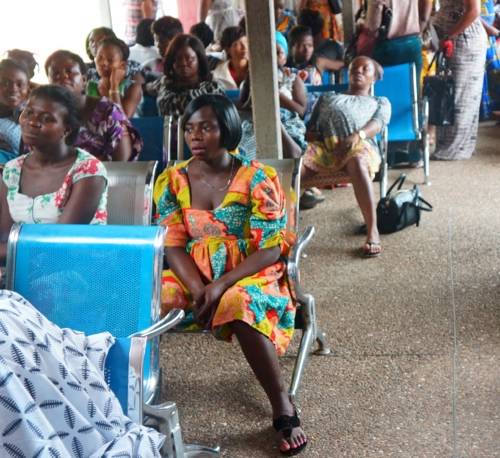
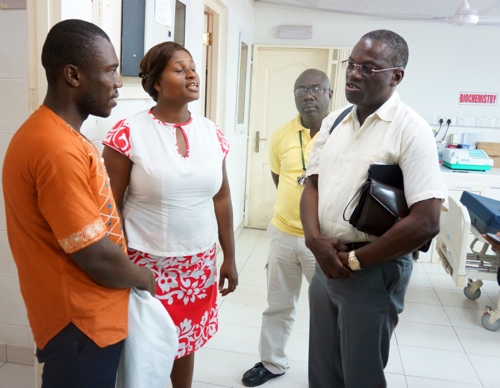 Clinician, Acting Director and Sola, Dr. Ansong in back, in lab 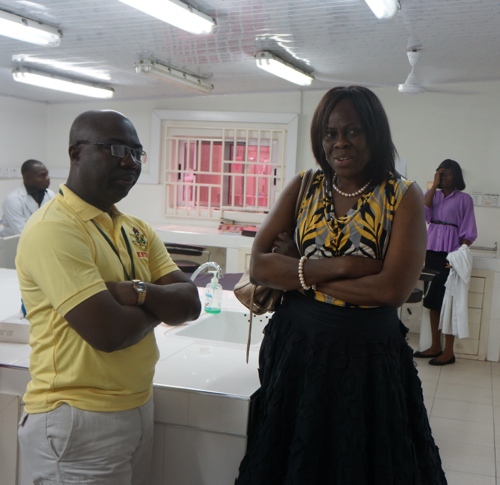 Dr. Ansong and Funmi in lab 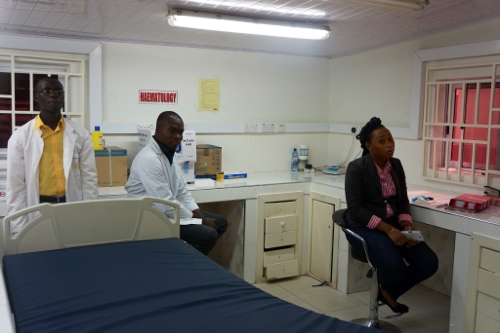
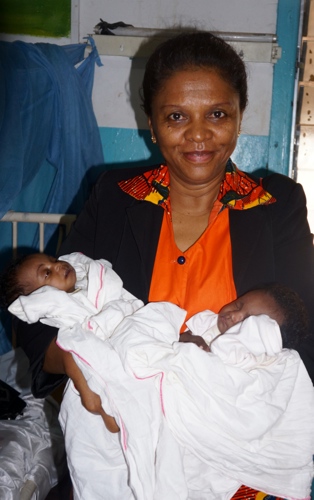 Dr. Annie and brand new twins 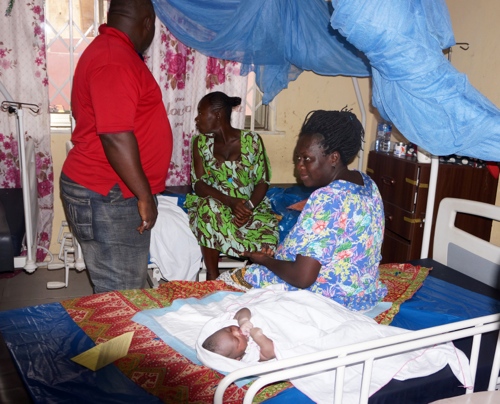
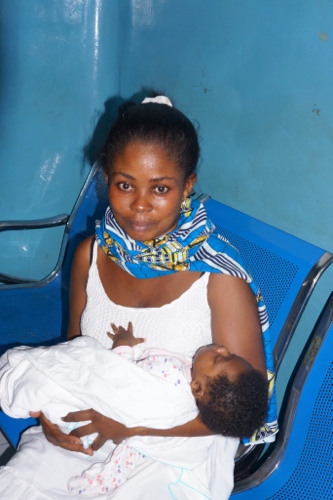
We left the clinic by 10AM for the long drive back to Accra in two separate cars. We and the Kipharts are leaving five hours after the Olopades, but decided we’d head in at the same time so that we could stop at the Kofi Anan art gallery, which we have visited with the Kipharts on two other trips. The plan was for the two cars to meet as we entered Accra, transfer people and luggage between cars and then go our separate ways.
What had been a relatively dull day became a good deal more exciting when a big traffic tie-up began (slightly) to threaten the Olopades making their plane. To avoid the traffic jam, Sammy drove the car with the women over a median strip in the highway, and phoned our driver, telling him to do the same. Our driver was understandably reluctant to do so, as the median was not a small one, the curbs were high and the oncoming traffic into which he would have to turn swift. Eventually Dick and Sola coaxed him into doing it, and he was promptly pulled over to the side of the road by a police car with its lights flashing. Two incredulous and irate police officers shouted at our poor driver, but eventually allowed him to go, without ticket or bribe, probably because Dick and I were in the car.
The Olopades continued to the airport, making it in plenty of time, and we and the Kipharts enjoyed an interesting 45 minutes at the gallery, doing only very minimal damage. We were dropped at the airport and went to the restaurant, where I had an excellent cheeseburger and fries, making me feel almost home. Got through ticketing, immigration and security quickly, which is always the case when you have three and a half hours to spare. We’re currently relaxing in an airline lounge, awaiting our flight to Frankfurt.
Reflections on the trip.
At breakfast on our last day, Funmi said that her favorite part of the previous day was the chief in the last village we visited. When I asked her why, she said “because he greeted the Kipharts by saying, ‘I remember you. You came here nine years ago, and you gave us clean water.’ That’s why you do this work, ” Funmi said, passionately. “You may not remember the village (when the Kipharts saw the village name on Alex’s itinerary, they had not recalled going there), but he remembered you. You do not know who you are going to touch, but they will remember you and what you did. And when you’re bouncing up and down on that bumpy, dusty road, you may think, ‘why do I need to be doing this, when I could be so much more comfortable back in Chicago.’ But if you can touch one person every day, then you have really done something.”
These trips indeed take us out of our comfort zone. Physically, they are difficult, and they don’t get easier as the years pass. Because of poor water pressure in Kumasi, Carol and I learned a new skill–taking a bath with half a bucket of warm water. But much more than physically, they take us out of our cultural comfort zone.
You learn how people different from you in so many ways share a common humanity. You see the strength of the human spirit, enduring–no, more than enduring, rejoicing–under conditions that would be almost unimaginable to you. When you travel the dusty, bumpy road, you are reminded that this is the road that people in the village must traverse to get to a hospital, and not in air conditioned SUVs. You imagine what these dirt roads are like in the rainy season and wonder how children in one village can get to the nearest secondary school, five miles away.
In other words, you learn of how privileged a life you lead and of the tremendous number of things that you take almost completely for granted. Probably the most basic of these is where the Kipharts started their work–water. Providing clean water makes all the difference. And when you add hygiene and health care to clean water, you completely transform people’s lives.
You are reminded on these trips that the food you slipped a credit card out of your wallet to purchase at the grocery store was produced only with great effort under very difficult situations. And you see that people in remote areas have enormous intelligence and abilities that you come to respect and admire. You learn how much you do not know or understand and how you do not have all, and may not have any, of the answers to problems others face, that you must listen, observe and trust others to solve their own problems in their own ways.
For all of these lessons, learned or re-learned, this was a great trip. These lessons are worth trying to retain and worth learning again. And again. Because they are not at all easy lessons to retain when you slip comfortably back into the world you left behind on this trip.
We were able to see and appreciate the tremendous growth and evolution of the Kipharts’ work since we started traveling with them five years ago. Much of this growth and evolution is due to the Olopades guidance and execution. It was wonderful to witness Peter Eduful’s son, Alex, take over the work that his father started.
On a more personal level, the trip allowed us to reconnect with friends we’ve made in Ghana over five years and in Nigeria, over two. And nobody who has read this blog can fail to appreciate what a pleasure it is to travel and laugh with, and learn from, our friends Dick and Susie, and Sola and Funmi.
If asked to pick the highlights of this trip, I would choose two at opposite ends of the experiential spectrum that bracketed our time in Nigeria and Ghana, the glamour of the fabulous engagement party in Lagos on our first full day of the trip, and our visits to the wonderful, but decidedly unglamorous, rural villages near Kumasi on our last full day. And there was some pretty terrific stuff in between.
Thanks to all of you who came along and have shared your comments. Now rest up a bit. We take off for Namibia in three months.
|
|














